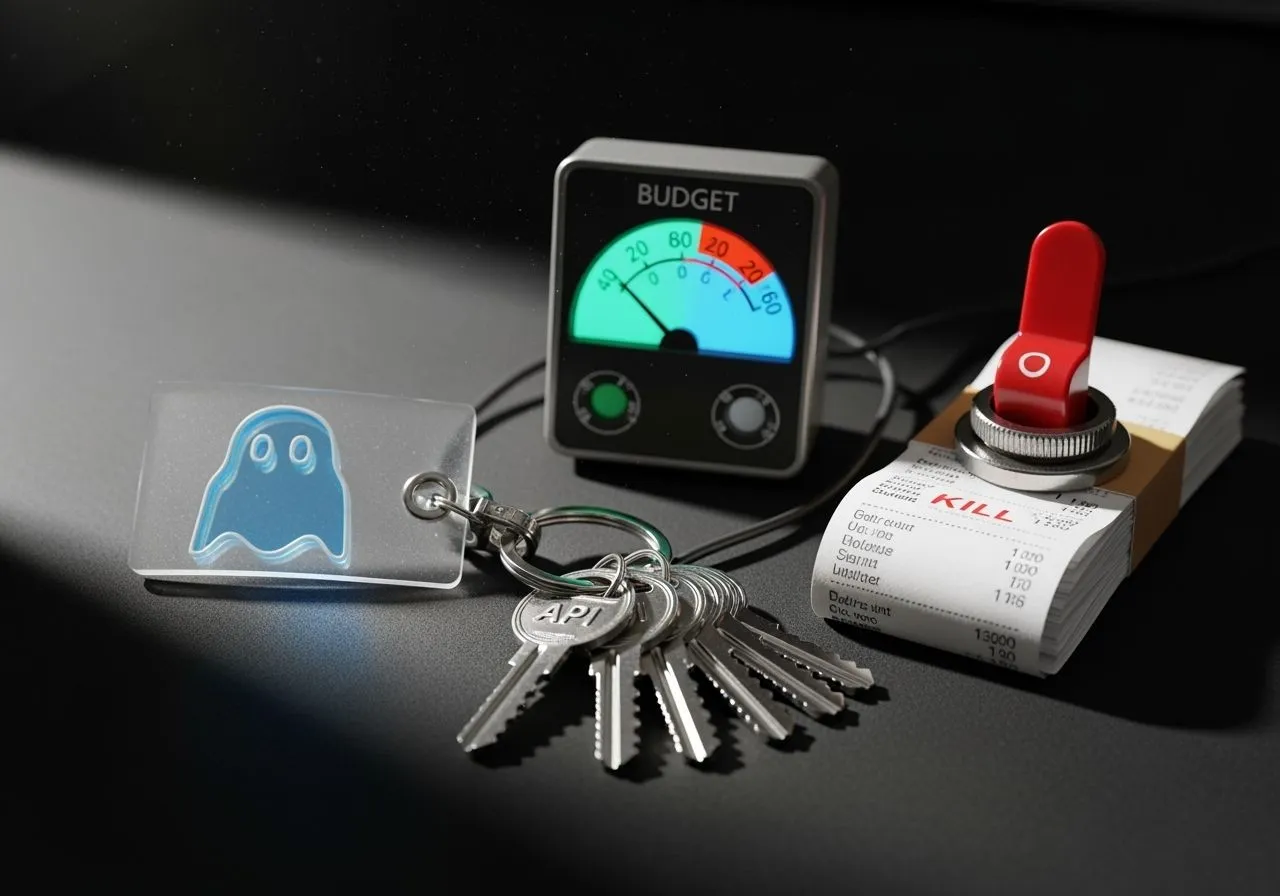We spent two years arguing about vibes: prompts, personas, “act like a…”. Cute. The future is chores. A ghost with an API key logs into three services, pulls the doc, pays the invoice, files the receipt, and pings you only if it couldn’t.
No sparkle. No TED talk. Just a to-do list that does itself.
Ambient autonomy: tiny agents with budgets and brakes, not chatty gods.
Least permission + receipts: provenance is performance.
Build boring: pre-flight risk, cap spend, ship rollback.
From chatbot theater to chore engines
Call it ambient autonomy: small, scoped, tedious—and brutally effective. If you still need to “ask” the machine, you’re already behind. The point is not asking.
The shape of the agent that survives
Chatty generalists make great demos and terrible coworkers. The agent that actually lives in your stack looks like this:
One verb, one budget. “Reconcile.” “Summarize.” “Draft.” Each gets a daily cap and a per-action cap.
Least permission. Read-only by default. Upgrade scopes only when a failure coughs up a receipt.
Hard exits. Global kill switch, max runtime, heartbeat required. If it can’t say “I’m alive” on schedule, it’s dead.
Cold receipts. Every action leaves evidence: inputs, outputs, dates, links, artifacts. If your agent can’t testify, it shouldn’t act.
Everything else is theater.
Accountability is the new performance
Model size is flattening into commodity. What differentiates you next year is provenance. Who did what, when, with which text and which settings. If your pipeline can’t answer that in one screen, you’re not “AI-powered,” you’re risk-powered.
Observability for humans beats observability for dashboards. Make the receipts read like a two-minute court transcript. If you need a data engineer to explain what happened, nothing happened.
Interfaces will evaporate (that’s the trap)
Your UI is becoming a receipt viewer. The agent acts, your screen shows proof. Feels magical until something breaks and you realize you shipped a ghost with admin powers. Guardrails aren’t a feature—they’re your whole brand.
You don’t want users to “trust” the machine. You want them to trust the brakes.
Edge vs cloud is a false debate
On-device is fast and private; cloud is heavy and connected. Both matter. The mistake is worshipping either. The future agent is edge-first for judgment, cloud-when-it-counts for integration, and always-with-a-receipt. If the output touches money, people, or reputation, it gets stamped and archived. No exceptions. Convenience is not a chain of custody.
How we build for that future (today)
Ship the guardrails, then the ghost.
Pre-flight the risk.
What can it do? Read / Write / Spend / Speak.
Where can it fail? PII, external accounts, irreversible steps.
If you can’t write the policy snippet in 5 lines, you don’t understand the risk.
Permission on a diet.
Scopes start at read-only; additive only when a failure demands it.
Wildcards are IOUs to chaos. Ban them.
Budget everything.
Per-action cap ($5), daily cap ($50), retry cap (2).
Quotes before execution if the spend could spike.
Receipts or it didn’t happen.
Inputs, outputs, settings, links, timestamps—exportable as a single block anyone can paste and read.
Provenance tag on the output artifact (hash + date).
Rollback included.
Draft-only by default for writes.
Snapshots before change.
One-click revert. If you can’t undo it, you didn’t earn doing it.
What breaks first (and how to avoid it)
Polite errors. Agents quietly “retry later” until the quota burns. Fix: cap retries, escalate with proof after 2.
Scope creep. You add “just one” wildcard to ship a demo. Fix: log failed permissions; justify each scope with a receipt.
Phantom dependencies. Scripts depend on tribal knowledge (the Tuesday spreadsheet). Fix: stamp inputs; archive links; attach to the receipt.
The boring stack that wins
Reality Boundary Test: Gate risk before you turn it on.
Scope Bouncer: Paste scopes, cut overreach, copy the minimal set.
Proof Stamp: Hash your spec/prompt/beat sheet so it exists in time.
Receipt Chain Inspector: One-file, human-readable evidence after the run.
Proof, not vibes. That’s how you scale trust without a sermon.


